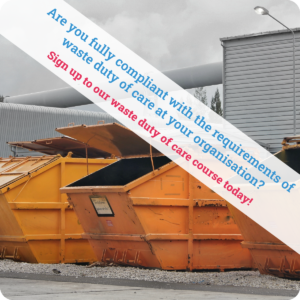
Despite the use of asbestos being banned in the UK and Ireland for over 20 years, it remains a significant hazard, with the Health and Safety Executive (HSE) estimating past exposure kills around 5000 people a year in Great Britain and can still be found in 300,000 non-domestic buildings.
In support of Global Asbestos Awareness Week, we look at the background of the once-titled ‘magic mineral’ and what organisations must do to protect people from harm.
Background
Asbestos is a group of naturally occurring fibrous minerals, widely used in the 20th century owing to their insulating and fire-resisting properties. The most common type of asbestos is chrysotile (white asbestos), used in construction materials in buildings.
Common asbestos-containing materials (ACMs) include:
- pipe insulation, loose-fill insulation and insulation boards;
- vinyl floor tiles;
- textured ceilings (artex); and
- cement products, such as corrugated roofing sheets.
The inhalation of asbestos fibres is recognised to cause lung cancer including mesothelioma and asbestosis (a chronic lung disease). Even in Roman times it was identified that slaves mining asbestos became ill, and despite growing recognition of its harm at the turn of the 20th century, it wasn’t until 1999 that its use was completely banned in the UK with Ireland banning its use at the end of 2004.
Asbestos is known as the ‘silent killer’, as it can take decades for health issues to be identified and diagnosed. It’s for this reason health records of asbestos exposure must be kept for a minimum of 40 years.
Whilst many countries have outlawed the use of asbestos, it is still being mined for use in Russia, China and Brazil.
Legislation
Specific legislation exists across the UK and Ireland requiring that employers protect workers from exposure to asbestos, including:
- The Control of Asbestos Regulations 2012 in Great Britain;
- The Control of Asbestos Regulations (Northern Ireland) 2012; and
- the Safety, Health and Welfare at Work (Exposure to Asbestos) Regulations 2006 in Ireland.
Additional legislation also sets requirements for the control of waste asbestos and the prevention of water being polluted by asbestos.
Managing the risk of asbestos
The general requirements for employers to manage the risk posed by asbestos are to:
- Identify if buildings contain ACMs through an asbestos survey. This should be done by a competent asbestos surveyor and may also require samples to be sent off for analysing to confirm whether they contain asbestos. For buildings constructed before the complete ban on asbestos they should be assumed to contain asbestos until a survey proves otherwise.
- Assess and manage the risk of exposure posed by ACMs found in the building, considering the condition of ACMs and likelihood of people being exposed to it. Action may be required to protect or encapsulate asbestos or have it removed (which may require a licensed contractor for higher-risk work with asbestos).
- Establish records and inform people on the presence of asbestos to prevent unintentional disturbance and exposure. An asbestos register should be kept and shared with relevant workers (including contractors), to ensure they’re aware of the location and condition of asbestos. Signage may also be required if asbestos can be found in commonly used areas.
Additional training may also be required for workers, in the UK this is split into 3 main levels:
- asbestos awareness training;
- non-licensed asbestos work training; and
- licensed asbestos work training.
Asbestos training courses are offered by organisations such as UKATA (the UK Asbestos Training Association).
The HSE, as well as the Health and Safety Authority (HSA) and Environmental Protection Agency (EPA) in Ireland both provide detailed guidance to help employers and others fulfil their legal duties and protect people from being exposed.
- Managing and working with asbestos; Approved Code of Practice and guidance (HSE).
- Asbestos-containing Materials (ACMs) in Workplaces; Practical Guidelines (HSA).
- Best Practice Guidance for Handling Asbestos (EPA).
